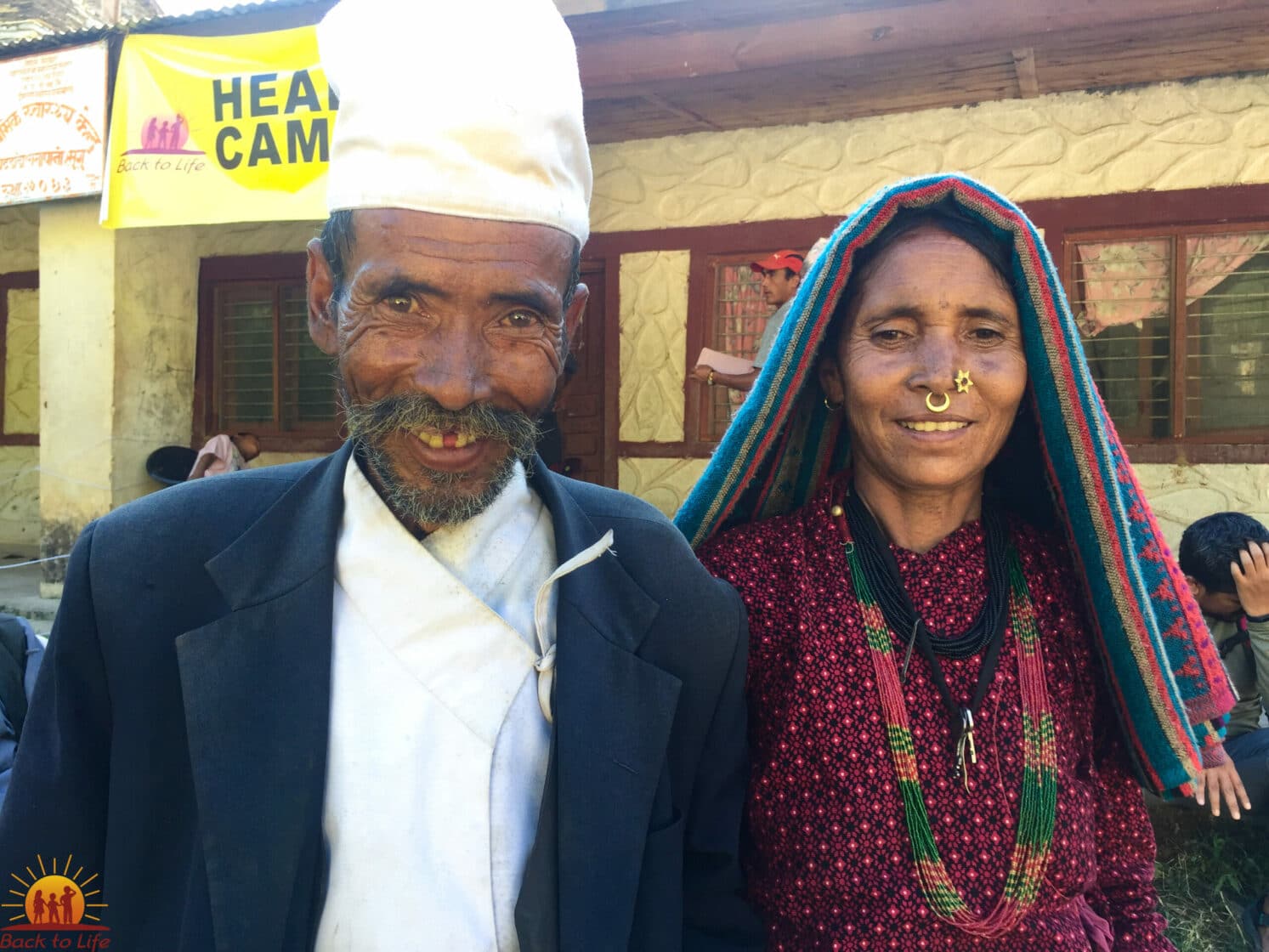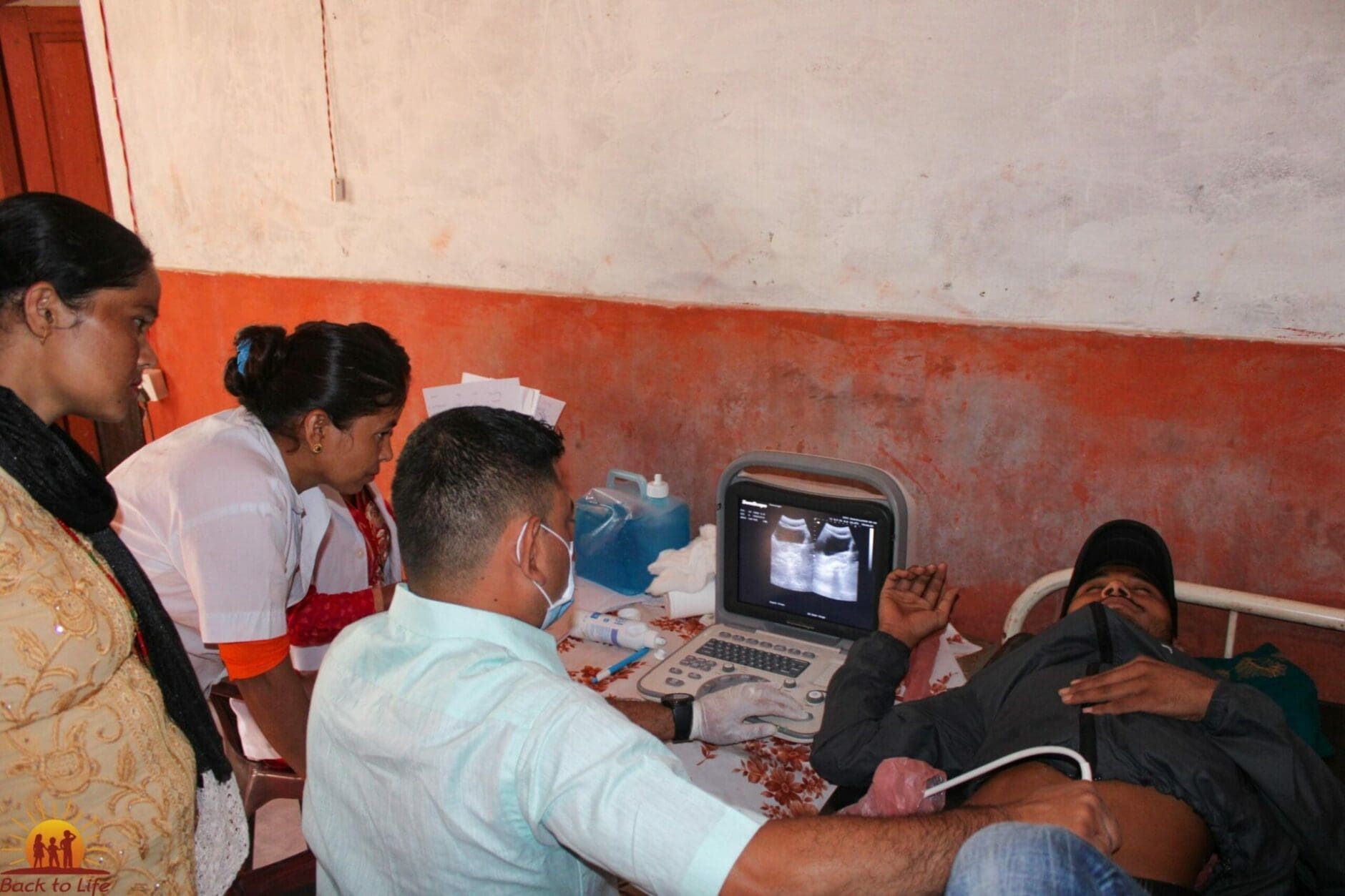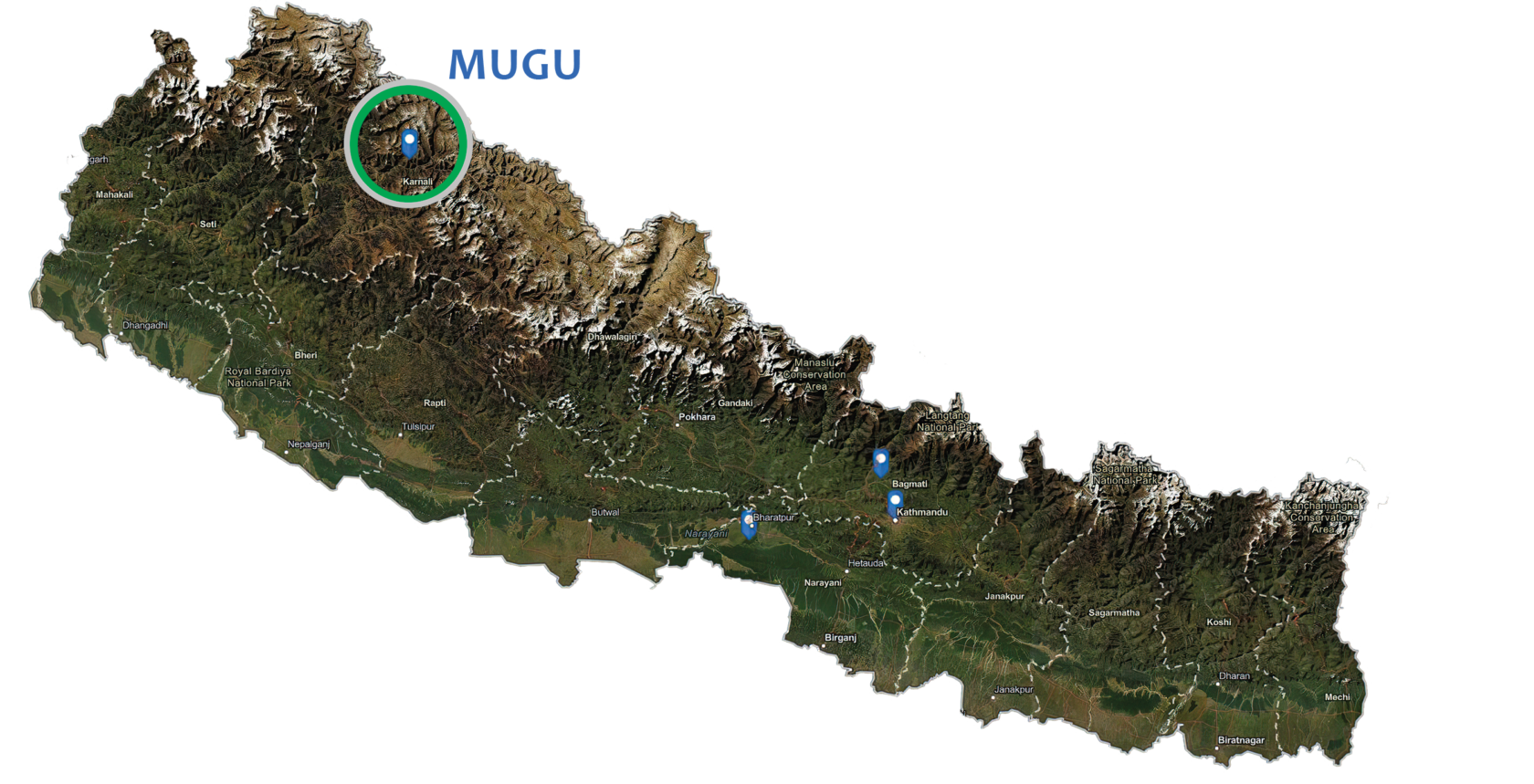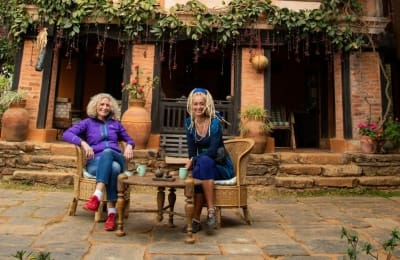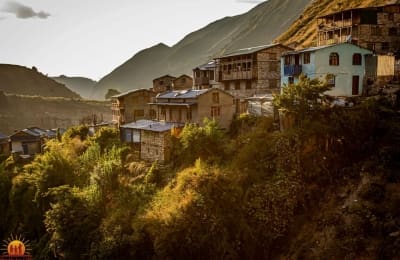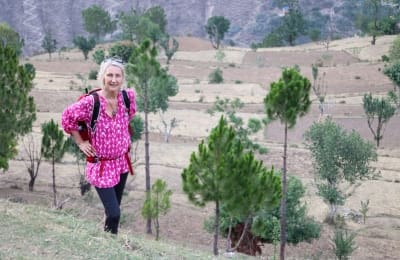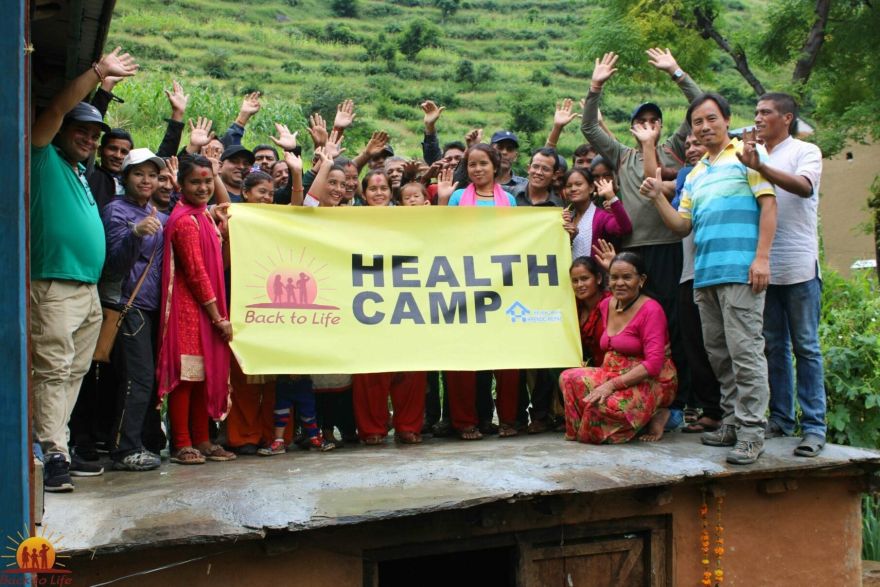
Our health camp for 1200 people in Khatyad

It only takes seconds and the weather changes. Thick fog blocks any view of the landing strip at Kolti in Mugu. Again and again the pilot aborts the landing and flies over the area again. It’s dangerous, he has to catch the right moment within a few moments, otherwise a catastrophe threatens. Too often these little fan guns have crashed. Only the 8th attempt succeeds. Not far from the runway, our Back to Life team sits together with the doctors from our health camp, which has just ended. Everyone looks at the scenario in silence, nobody wants to show that they are afraid. Because this little machine is supposed to bring the team back to the lowlands to Nepalgunj and later to Kathmandu …
A good team makes itself strong
Working in our health camps demands a lot from the doctors. Getting to and from the airport alone always poses a significant risk – regardless of whether you are traveling in rickety planes, jeeps swinging over abysses or on foot on unsecured high mountain trails. This autumn’s health camp is taking place in Khatyad to treat the sick residents of the villages of Seri, Khamale, Gamtha, Shreekot, Kotdanda, Sukadhik and Hyanglu. In addition to the team of specialized doctors that we brought with us from Kathmandu, who do not otherwise exist in Mugu (pediatrician, gynecologist and a radiologist), we are also supported by midwives and nurses from our birthing centers as well as 4 state doctors.












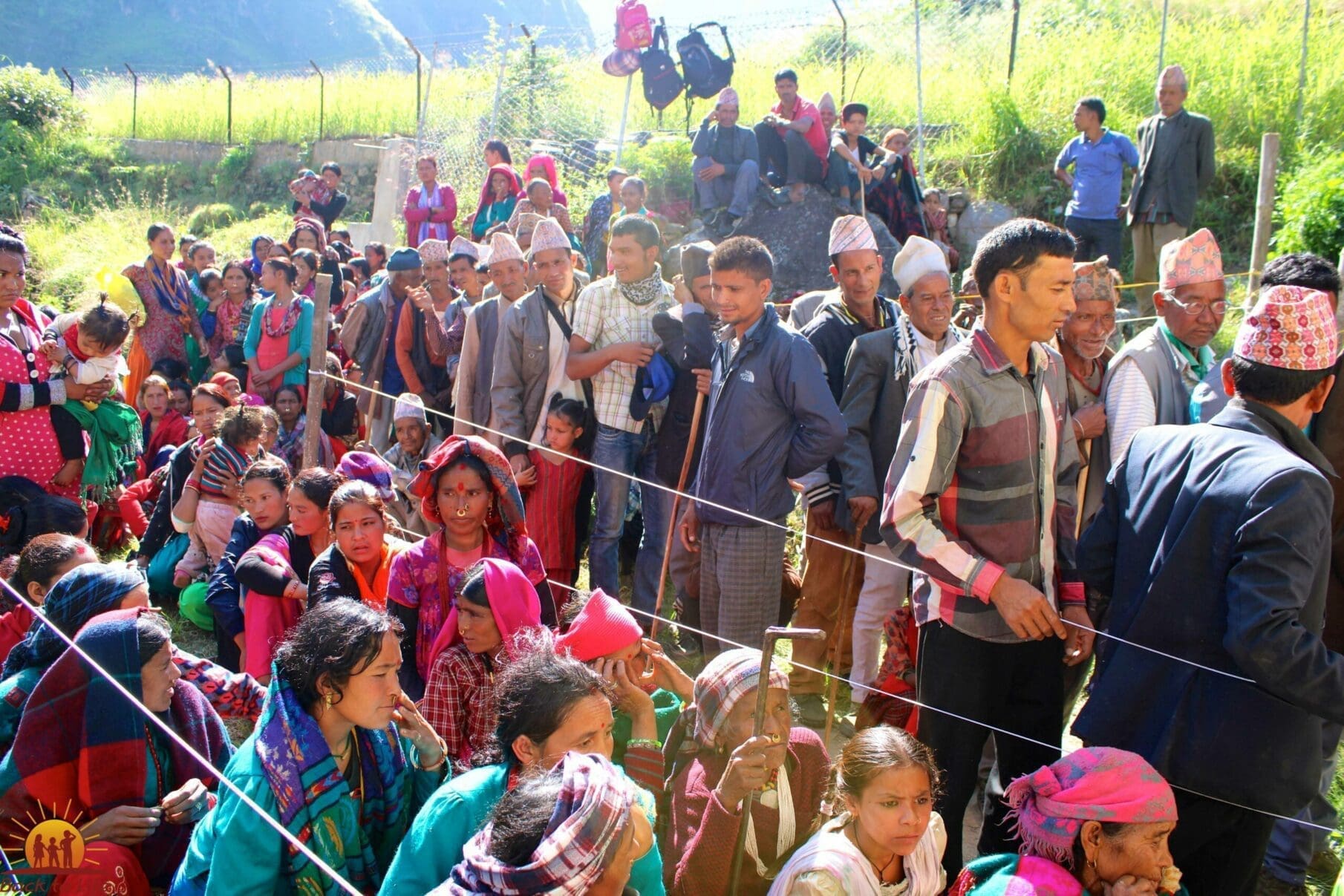

Typical diseases are treated
On the first day, a long line forms from 7 a.m., everyone waits patiently for their turn. The list of diseases in women is long: cervical inflammation, uterine subsidence, prolonged menstrual periods, urinary tract infections and stomach ulcers are common. Children are primarily concerned with otitis media, respiratory diseases, eczema and polio, but also with developmental delays, hearing loss, fungal diseases and malnutrition. In men, there are also high blood pressure, gastric mucosal inflammation and musculoskeletal disorders.
Emergency at night
In the late evening of the first, intensive working day, the team was about to fall asleep on the unusually hard floor when suddenly an emergency was reported: A woman was brought in who had been bleeding extremely heavily for over 10 hours. When the gynecologist rushes to the woman, she has almost lost consciousness, two liters of blood and her unborn child after a miscarriage. After the doctor has used everything she has at her disposal all night to keep her patient alive, she orders her to be transported to a hospital in the morning. The woman urgently needs blood transfusions, otherwise she has no chance. It takes 4 porters for the one-day hike through the impassable mountains. Then you hit a road and can reach the nearest local hospital on the edge of the mountains with a 6-hour jeep ride. The now completely dissolved husband has no money to pay for this transport, he is desperate and worried about losing his wife. Back to Life pays the costs. It will be a week before the good news of the woman’s recovery reaches us.
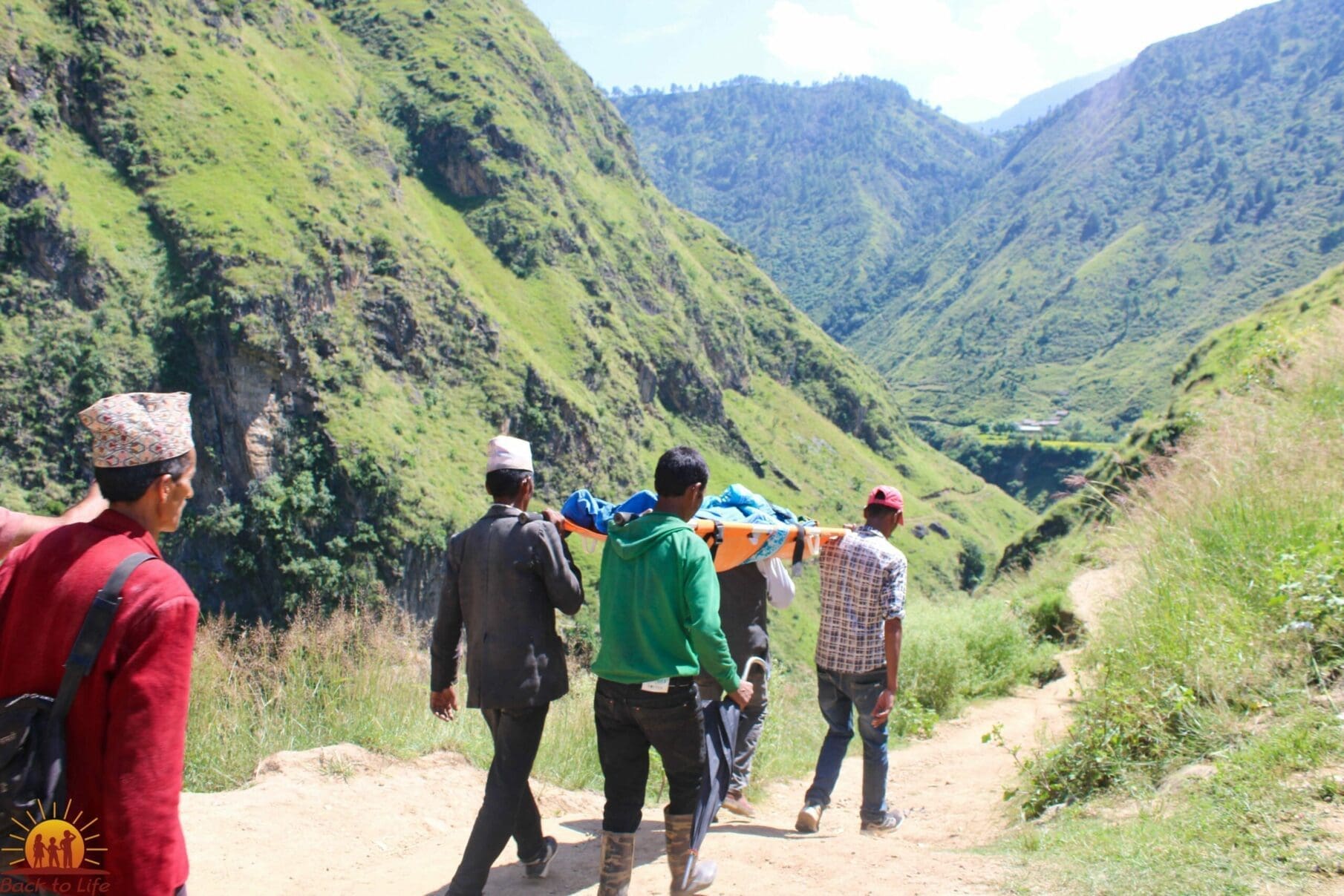







Taboo topics come into focus
Uterine subsidence is a common problem for Mugu women and also a taboo subject. The daily backbreaking work in the mountains takes its toll, the bodies of women can hardly withstand the hard stress. The result is a lowering of the uterus and in many cases even a protruding outward through the vagina. The women affected suffer greatly and are very ashamed, many become depressed. This also includes traumatic experiences, as husbands often react with incomprehension, anger and even threats of divorce. The gynecologist therefore gives out many vaginal pessaries that provide immediate relief in just a few simple steps.

One woman reports on behalf of many similar fates: “I am the mother of 5 children, with the birth of the third child my uterus sagged. For many days I was bleeding, I didn’t know what to do. Then I had to live with it, I suffered like this for 20 years, until today. I feel much better now, I can hardly believe it. “
Doctors keep hearing stories like this – behind each of them an individual fate, many of them more than dramatic. For hundreds of people it is the first medical examination in their life. In some cases even with modern technology: most of them have never seen a portable ultrasound device that the radiologist had brought with them – they are amazed at the images from their bodies. After a few days, the doctors examined and treated a total of 1,200 people.
Every healthy person is a development goal
Only a healthy person can work at full speed, generate the family’s household income and thereby ultimately improve Mugu’s development. Apart from that, it is usually the case that in families in which an adult is absent as a breadwinner due to illness or death, the children have to work harder and are therefore often unable to go to school.
In a figurative sense, every patient who has recovered should also be viewed as a sustainable, small “development goal”. In this way hope can be spread and Mugu can be brought a little further into modern times. As exhausting and dangerous as it is every time our health camps are, they are important for the people in the mountains.










